If you’d run a poll a month ago, the vast majority of St. Louis Blues fans would have expected general manager Doug Armstrong to have a very busy offseason. After all, he had armed himself with three first-round picks after a busy trade deadline that involved dealing Ryan O’Reilly, Ivan Barbashev, and Vladimir Tarasenko. He spoke openly about being willing to deal his later first-rounders for young, controlled assets. And the team was coming off an extremely disappointing season in which they missed the playoffs and ended with their best draft position in over a decade.
Now, a month later, the Blues have done very little. They drafted three pieces for their future in the first round but traded none of their picks. The only move they did make was to trade a sixth-round pick for to the Philadelphia Flyers for Kevin Hayes, with half of his salary retained by the Flyers. Hayes will shore up the middle-six and should bring some levity to the locker room, but he isn’t exactly an impact player on the ice. And on free agency day, the Blues made some quiet moves at the fringes, bringing back Stanley Cup winner MacKenzie MacEachern and signing three additional depth pieces.
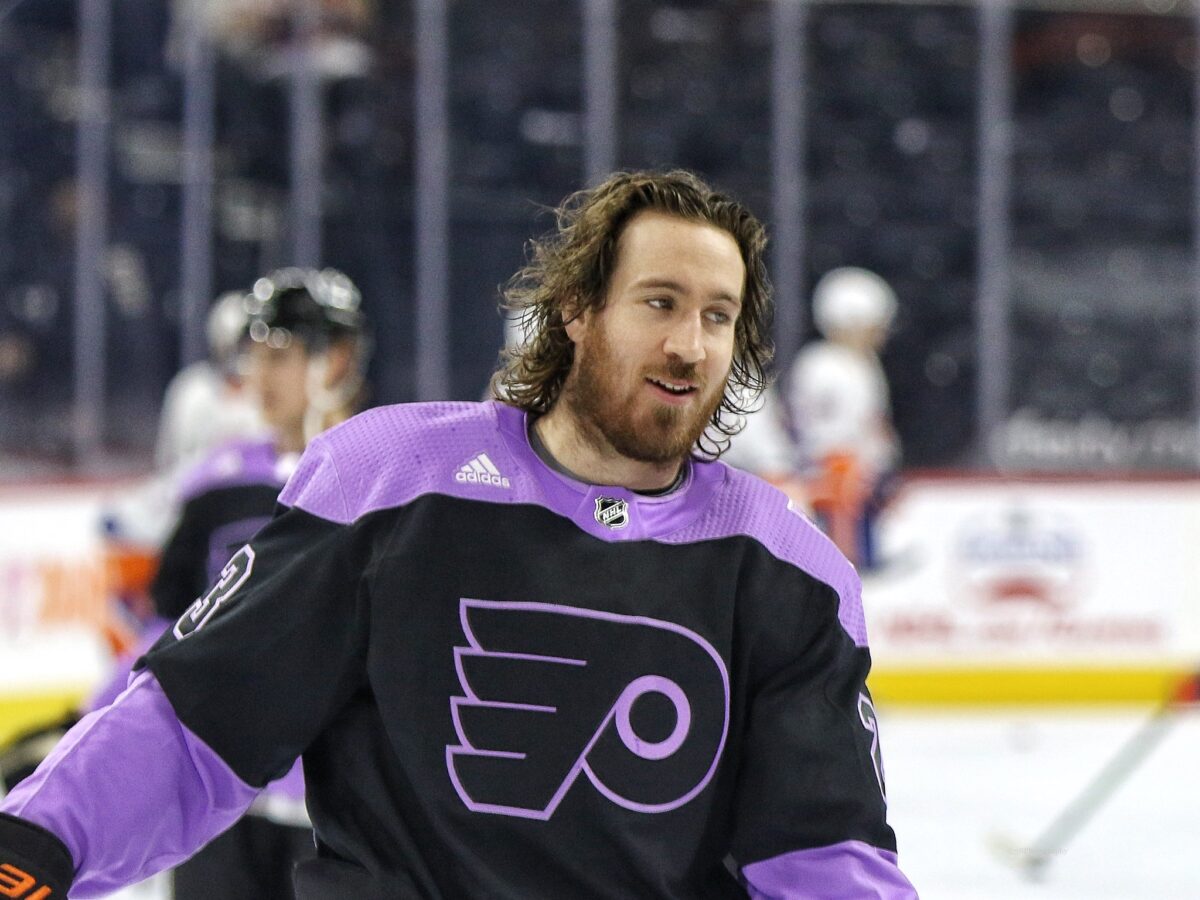
While Armstrong can happy talk about this being largely the same roster that was capable of a 109-point season in 2021-22 (especially on defense), the reality is that this roster looks eerily similar to the team that finished with 81 points last season — except without Tarasenko, O’Reilly, or Barbashev, who all started the 2022-23 season with the Blues. Of course, in a league that allows half its teams into the playoffs, any team can get hot enough for a month-long stretch to reach the postseason. But as they are currently structured, the Blues should not be viewed as a serious competitor next season. Let’s take a better look at their strengths and weaknesses.
The Adequate: A Deep Forward Corps
The Blues do have some stars up front and a lot of depth to supplement them. Two seasons ago, St. Louis put on an offensive showcase and had nine forwards with 20 goals or more. Three of those have left, but Armstrong will hope that Hayes, Kasperi Kapanen, and Jakub Vrána will be able to supplement their scoring sufficiently. They also have stars up front, as Robert Thomas, Jordan Kyrou, and Pavel Buchnevich are talented enough to be one of the most dangerous lines and power play units in the NHL. The trio combined for 205 points and 81 goals last season even despite the team’s struggles, and as Thomas and Kyrou enter the first year of long, expensive contract extensions, the pressure on them to carry the team offensively will kick into overdrive.
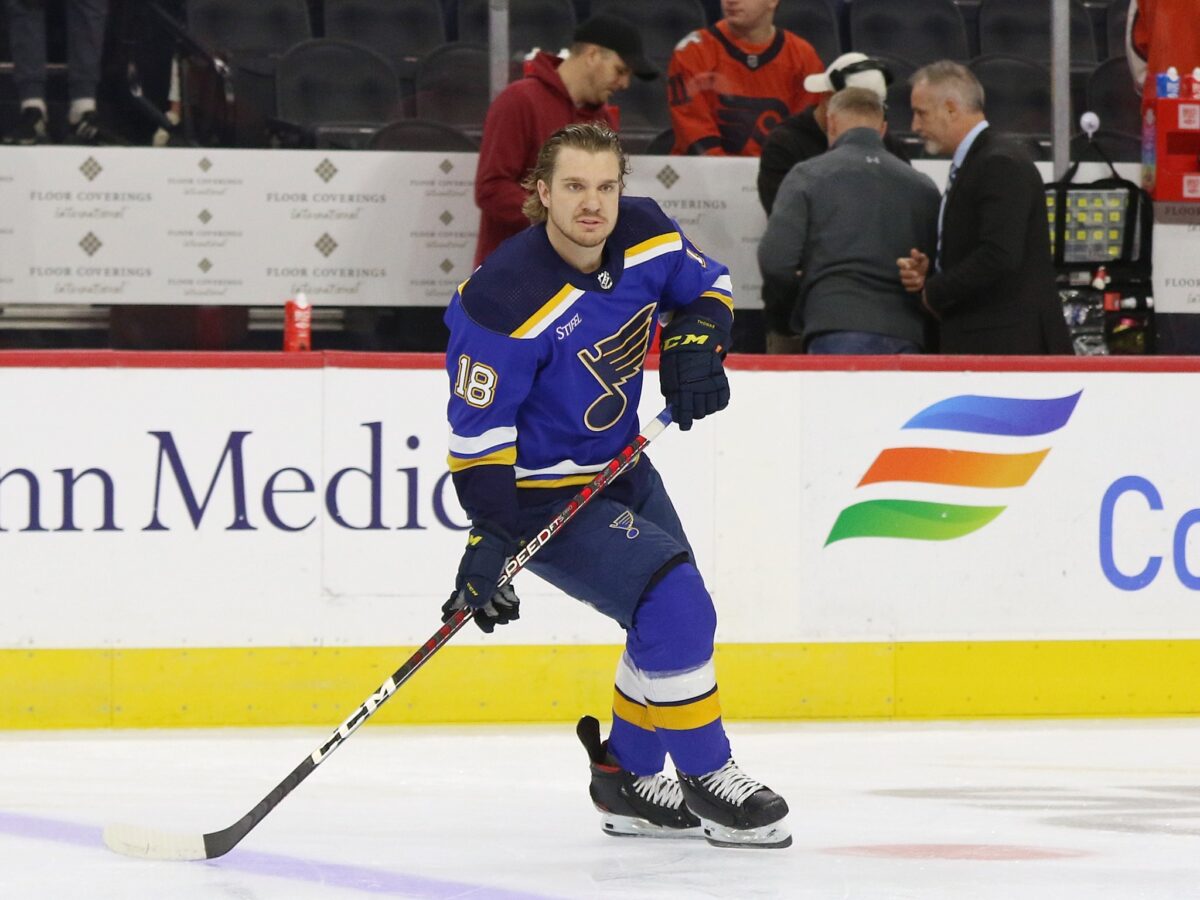
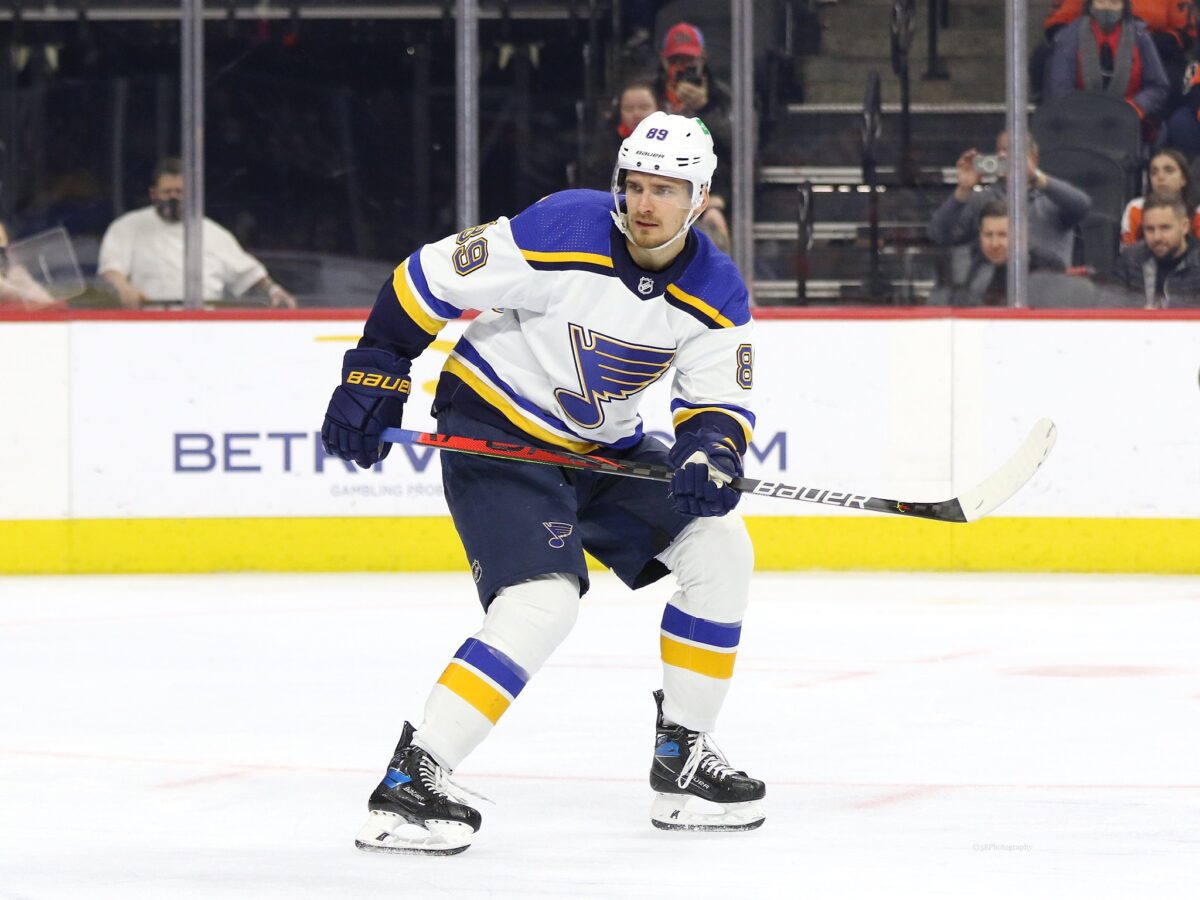

Beyond the stars, there is still a lot of depth. Brayden Schenn and Brandon Saad are veterans with playoff experience and scoring touch. Despite his feud with coach John Tortorella last season, Hayes was second on the Flyers in points with 54, managing 18 goals himself. Kapanen and Vrana fit in very well after arriving near the deadline, and they combined for 18 goals and 28 points in 43 games with the Blues. Youngster Jake Neighbours will be looking to make an impact, and depth pieces like MacEachern, Nathan Walker, Alexey Toropchenko, and Sammy Blais should provide a lot of grit on the fourth line and some ability to play up and down the lineup. All told the Blues have a forward corps that, in a vacuum, could compete for a playoff spot and even might be a threat once they make it there. Unfortunately, a hockey team isn’t built by a forward corps alone.
The Bad: Goaltending Woes
Without lingering here too long (there will be other articles for that), the Blues should have major concerns about their goaltending situation. Blues fans would like to overlook Jordan Binnington’s struggles, blaming the team’s goals-against woes solely on the defense (who we will come to discuss momentarily). But that is not a realistic picture of the goaltender Binnington has been over the last two seasons.
Related: Blues 2022-23 Report Cards: Jordan Binnington
The 109-point team from 2021-22 — which Armstrong and fans often point to as an example of this team’s potential — was largely carried by Ville Husso’s fantastic play. He stole the starting job from Binnington and earned a three-year contract with the Detroit Red Wings as a result. But in the last two seasons, Binnington has gone 45-41-10, with a .897 save percentage (SV%), a 3.24 goals-against average (GAA), and minus-26.6 goals saved above average (GSAA). Defenders will point to the blueline, and to strong stretches that Binnington has managed to string together at times (most notably in the 2021-22 postseason). But the fact remains that his performance hasn’t been nearly good enough for a number one goaltender, and certainly not for one making $6 million a season. And with Joel Hofer, an unproven 23-year-old rookie as his backup, he will have to make a complete 180 for the Blues to truly compete.
The Ugly: Defensive Disaster
Plenty of ink has been spilled about the Blues’ defense, and it would be belaboring the point to dig the grave further here. But despite Armstrong’s protestations to the contrary, there is no reason to believe that the group currently assembled can be a serious postseason competitor. At the time of this writing, the Blues are spending the second-highest dollar amount on their defense among NHL teams. But last season, with the same unit on the ice, they allowed the fourth-most expected goals against (xGA, 194.6) and the sixth-most high-danger chances against (HDCA, 673) at 5-on-5. Not one member of the team’s ostensible “top four” (Colton Parayko, Justin Faulk, Torey Krug, and Nick Leddy) played at or near their best, let alone played up to their contracts (the four are owed a combined $23.5 million AAV).
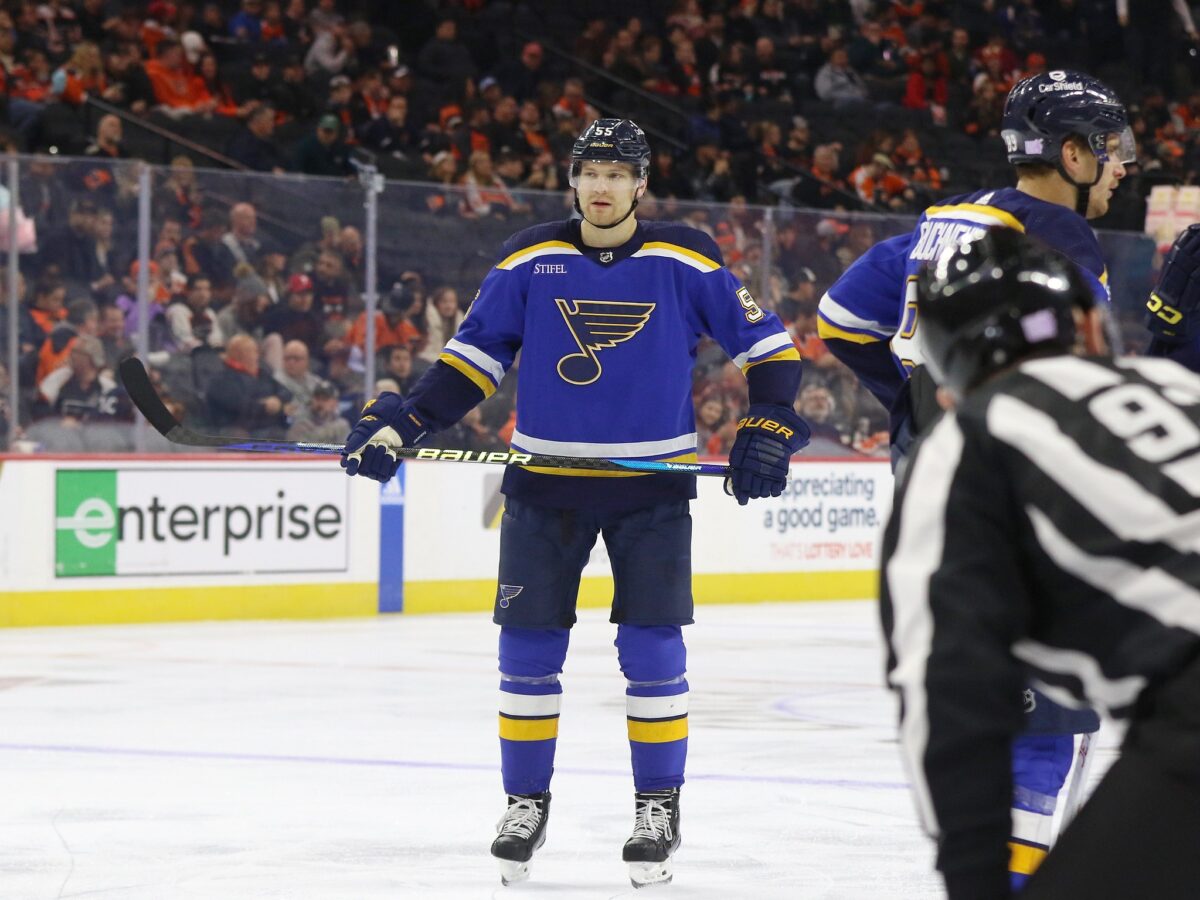
The Blues’ defense is beyond repair. And while Armstrong has to publicly say that he backs them and believes in them, the more fitting reality is probably that he couldn’t find any willing trade partners to offload them and restructure his defense. We know he tried to move Krug to Philadelphia. While Armstrong might say that he believes the defense can play up to its previous 109-point standard (which, again, was largely fueled by Husso’s stellar play), his real hope is more likely that they will play enough better that, with a heightened salary cap, he might begin to be able to move some of them out. But no serious observer can believe that this defensive group is capable of a deep playoff run, even with new defensive coach Mike Weber in place.
Still Time to Make Moves?
Of course, it is only July 9, and there is plenty of time before the season starts to make moves. But there are not plenty of resources with which to make them. The Blues’ roster has taken shape, and they only have about $2.3 million in cap room with one restricted free agent (RFA; Toropchenko) left to sign. All 31 potential trade partners have also settled on something near their final rosters, with many of them lacking cap room to make deals at this point, too. And the Blues’ most tradeable assets, their three first-round picks, have now been used to draft players for the future. Certainly, the Blues could deal future picks to adjust their roster at this point, but with the limitations discussed above, that seems like robbing Peter to pay Paul.
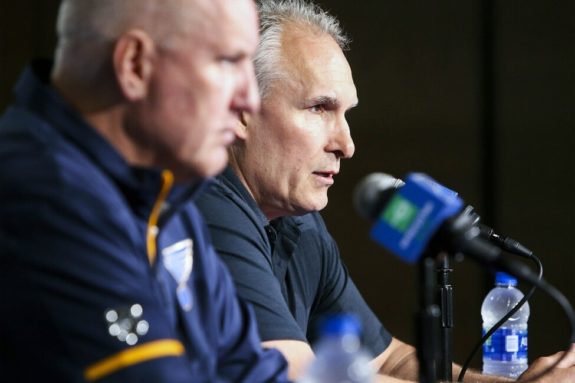
the reality seems to be that the Blues are done making moves for the summer, whether or not the fans acknowledge that. And if that is the case, the front office cannot truly expect the team to compete this season. Of course, that was always the plan. Armstrong hasn’t shied away from speaking about his team’s timeline for being a top contender. In two to three years, prospects like Dalibor Dvorsky and Jimmy Snuggerud will likely be in the NHL, Hofer might have matured into a true starter, and hopefully, Armstrong will have at least partially restructured the defense. But the road there isn’t going to be quick or easy, and Blues fans need to embrace that reality, or else they’re going to have a very painful season ahead.
